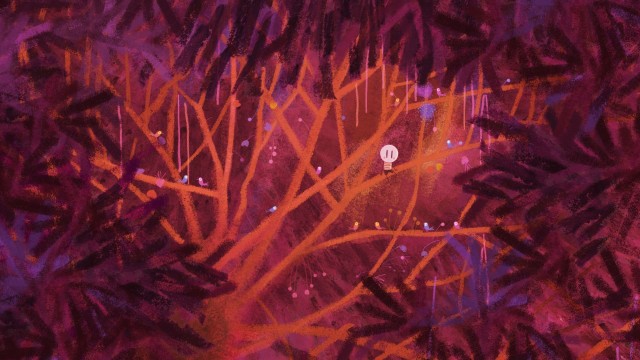Children see the world through symbols and broad phrases. Children don’t possess the full interconnectedness of society, and experience the world from a very close perspective. These events that happen around them have effects on people’s lives, but their main concern is of the self: how does this effect me. The process of maturation is making the connections of action and consequence, independence and society, and coming to the realization that the world is bigger than you.
Boy and the World is about a boy, Cuca, who experiences the splitting of his family. His father has to find work in the big city, while Cuca stays with his mother in rural Brazil. The separation sends Cuca on a journey through the world of Brazilian agriculture and capitalistic society to find his father, while keeping his eye on expressions of true happiness in the world symbolized by bright colorful celebrations and a joyous theme music.
Mostly utilizing a child-like hand drawn and cut-up aesthetic, writer-director Ale Abreu evokes an innocent grasp of the world. Workers toiling at picking cotton aren’t seen as either tragic or heroic figures, but are cogs in a rhythmic machine that create their own brand of music. Cuca has similar experiences to the rhythms of city life, and factory work. The world is an orchestra of patterns and music, if only someone is around to listen.
Abreu’s animation style is stunning. The opening sequence contains concentric circles that beget circles that beget patterns that beget circles that beget patterns, filling the frame with a kaleidoscopic array of colors. Rural life is hand-drawn with rough edges; Cuca has the stripes of a shirt, but not even the outline. Fantasies can take on painterly aesthetics, and the city takes on a harder, cut from a magazine sensibility. Though the animation is disparate, it comes together in a non-style reminiscent of Chuck Jones’ Duck Amuck.
When reality breaks into Cuca’s world in the form of capitalistic progress, Abreu drops the charade. The communal – dare I say communist? – subtext becomes text, and Abreu loses his way. Where the joyous theme music had been celebrations of community separate from work and society, suddenly these celebrations are the impediment of progress. Not content with mere pointing at the dangers of progress, at one point Abreu switches into a horror montage of live-action factory work, turning his delightful allegory into a full-on didactic sledgehammer.
Luckily, the quality of the film survives this massive misstep, and returns to Cuca’s maturation. When it’s not throwing anvils at the audience, Boy and the World is a complex treatise on the nature of growing up, memory, and how our childhood influences who we are in the world. Even as an anti-capitalist tract, Boy and the World is able to convey amoral progress through simplistic or symbolic displays1. Using gorgeous, hypnotic, animation Boy and the World finds its way to places of depth and meaning. It’s sad, beautiful, joyous, and a sheer delight, well deserving of its Best Animated Feature nomination.
Bonus: There is no dialogue contained within the film, and it does not have any subtitles. This is a movie fit for children of all ages, provided that they aren’t easily frightened by scenes of intensity.
1If I may indulge in a little political sidetracking, there have been many thinkpieces from the modern news media on the popularity of Bernie Sanders, and the Millennial embrace of the phrase “socialism.” Even though this hails from Brazil, many of its points have been experienced in various cities and communities across the country, as exemplified by Flint, MI (pre-Water Crisis). If one can extrapolate from this film that many are seeing the destruction of community is a direct result of poverty caused by rampant unchecked Capitalism, it comes as a natural turn that Socialism (if not outright Communism) is being seen as a valid political response.

